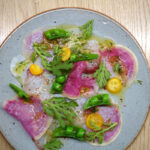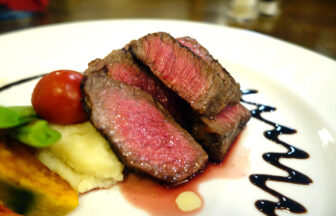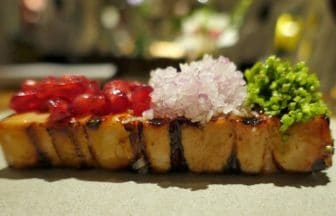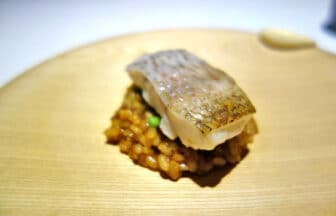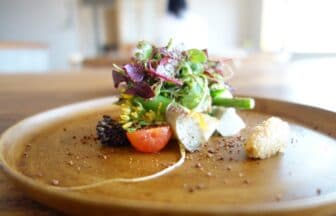A Takayama-based restaurant that could be categorized as local cuisine, but its thorough local sourcing of ingredients and unconventional approach to Japanese cooking puts it at the forefront of modern cuisine.
A must-visit spot for those looking to gaze into the future of Japanese food culture.
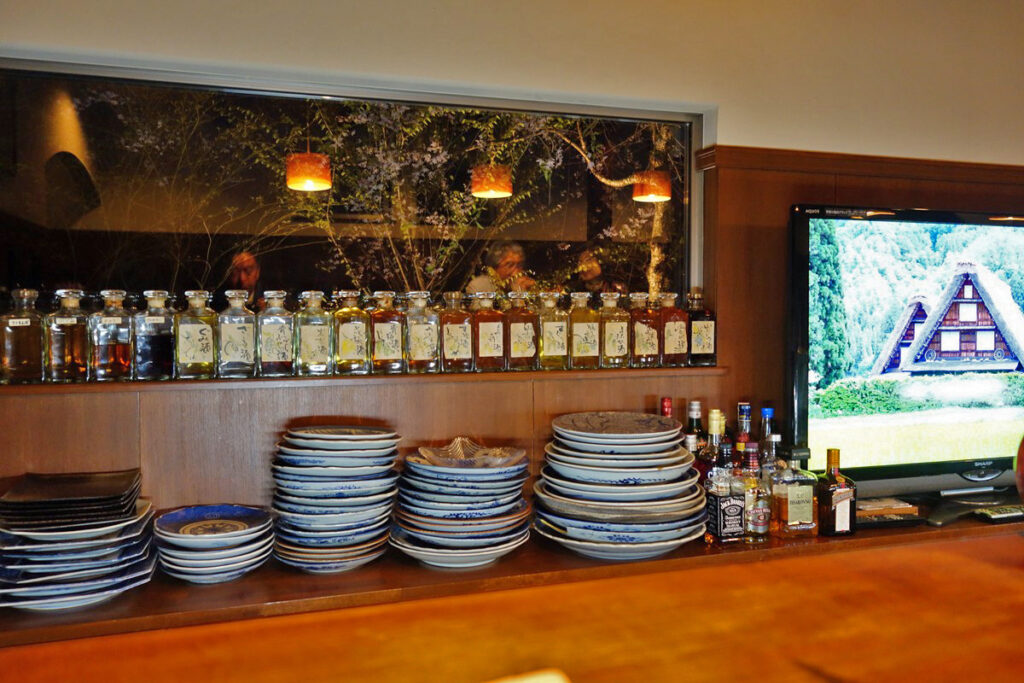
Ave. Budget: Lunch 15,000-20,000 JPY, Dinner 15,000-20,000 JPY / “Michelin Gifu 2019” One Star、Tabelog 100 Famous Stores
Features
Leonardo da Vinci is said to have left behind the words, “Ordinary painters learn from other painters, but great painters learn from nature.”
This perspective also applies to cooking, as one could say, “Ordinary cooks learn from other cooks, but great cooks learn from nature.” This was written about a certain Italian restaurant.
And once again I met a restaurant that made me think of these words.
That is the “Hida Seasonal Cuisine Sakana” in Gifu and Takayama.
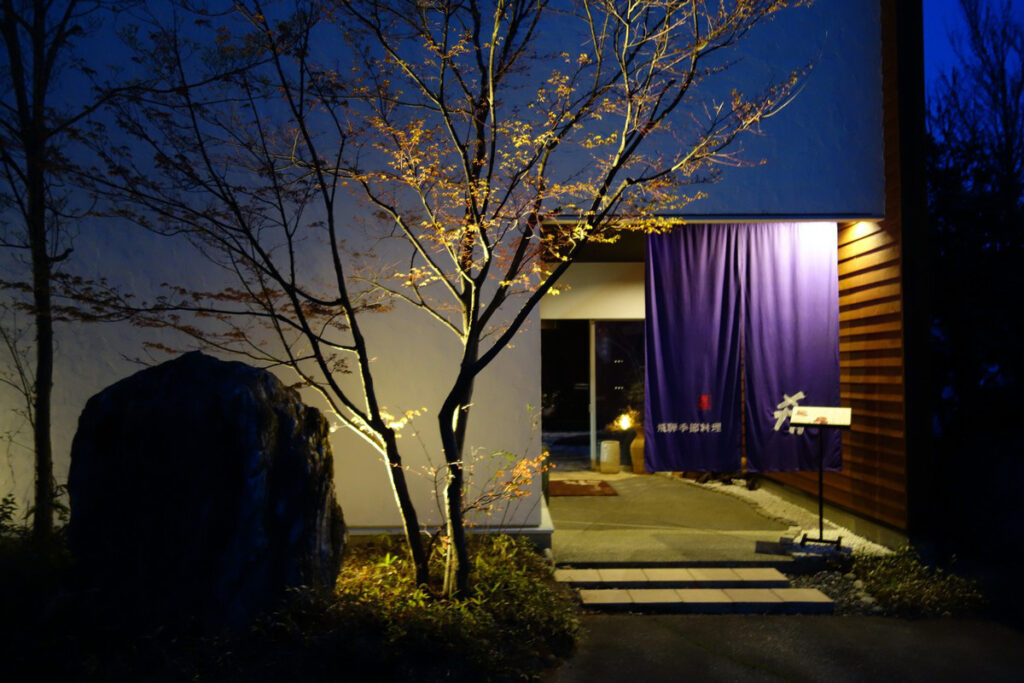
This “Hida Seasonal Cuisine Sakana” provides cuisine rooted in nature in the Hida region as its name suggests.
Seasonal cuisine includes wild greens in spring, river fish in summer, mushrooms in fall, and game in winter, which is similar to most regions of Japan if the restaurant is surrounded by mountains. Ultimately, it depends on the quality of the ingredients, how they are procured, how they are perceived, and how they are prepared.
It is the fork in the road that decides whether the chef’s wisdom, technique, and sense will make it a special or ordinary dish.
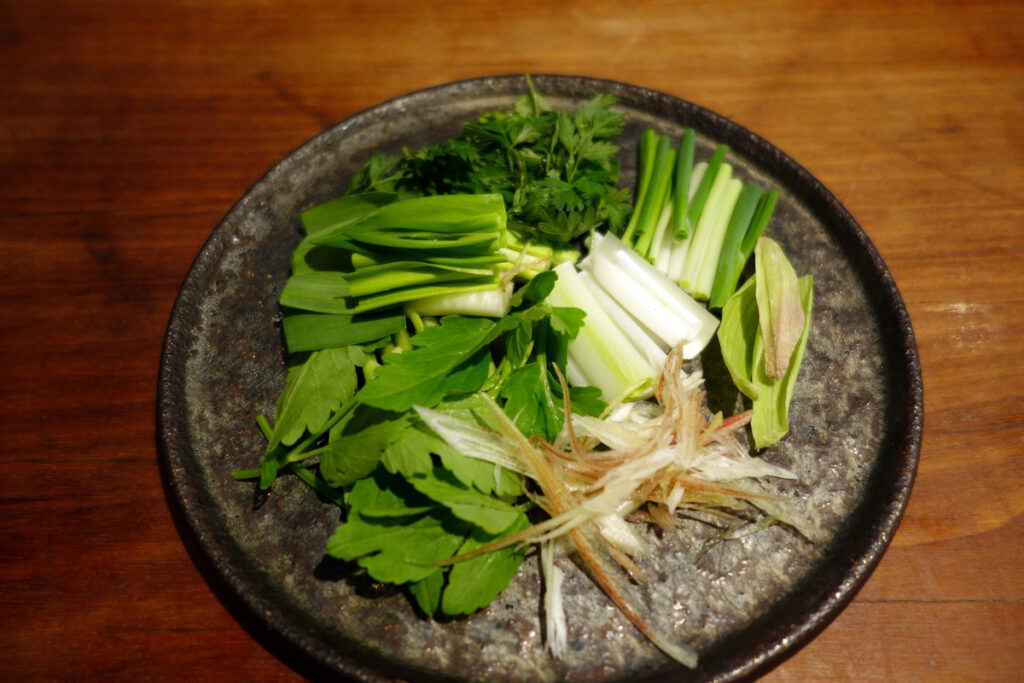
That’s why I started with this story.
I was struck by a conversation between a customer and the head chef at the restaurant, where they said that they were so impressed by the food here that they rarely visit other restaurants.
The food they serve, which is full of nature, yet also elegant and refined, is not something that can be learned from someone else.
It must come from the nature of the Hida region and the ingredients it provides, as if the nature itself is teaching the art of cooking.
The composition of the “omakase course” that changes based on the season and budget.
Let’s move on to the restaurant report.
The menu consists only of a “chef’s choice” course, featuring seasonal ingredients such as mountain vegetables, river fish, mushrooms, and wild game. During the real seasonal period, each type of ingredient has its own “experience course.”
I visited the restaurant in late April.
At this time, I requested the “chef’s choice course” which includes a mix of river fish, mountain vegetables, and Hida beef, at a cost of 13,000 yen.
However, from early May to early June, it becomes the full-fledged mountain vegetable season, so the limited time “mountain vegetable cuisine experience course” for 16,000 yen becomes available.
The head chef says, “Today’s mountain vegetables are delicious, but to be honest, in-season mountain vegetables are another level up in terms of taste.”
Without Hida beef and rockfish, the price is still a notch higher, but it is worth every penny.
「Chef’s Omakase Course」13,000JPY
First of all, the course starts with seasonal wild vegetables.
Wild vegetables for appetizer

The front row is fuki, the middle row is udo, and the back is unified with natural materials.
The back row includes cogoni and fuki miso, etc. I love this modern art-like look, including plate selection, and each flavor has its own personality.
I regret coming by car.
Having alcohol would make the food taste better. Next time, I’ll either come by taxi or stay at the nearby “Hotel Associat” on foot.
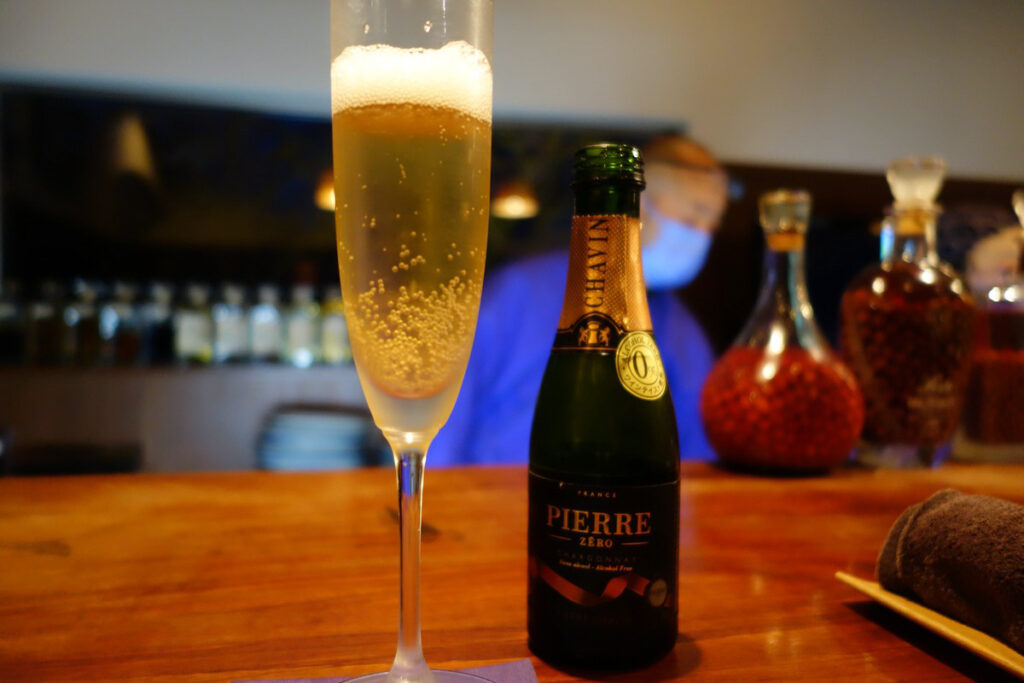
So, let’s start with non-alcoholic sparkling.
Wild vegetable dumplings
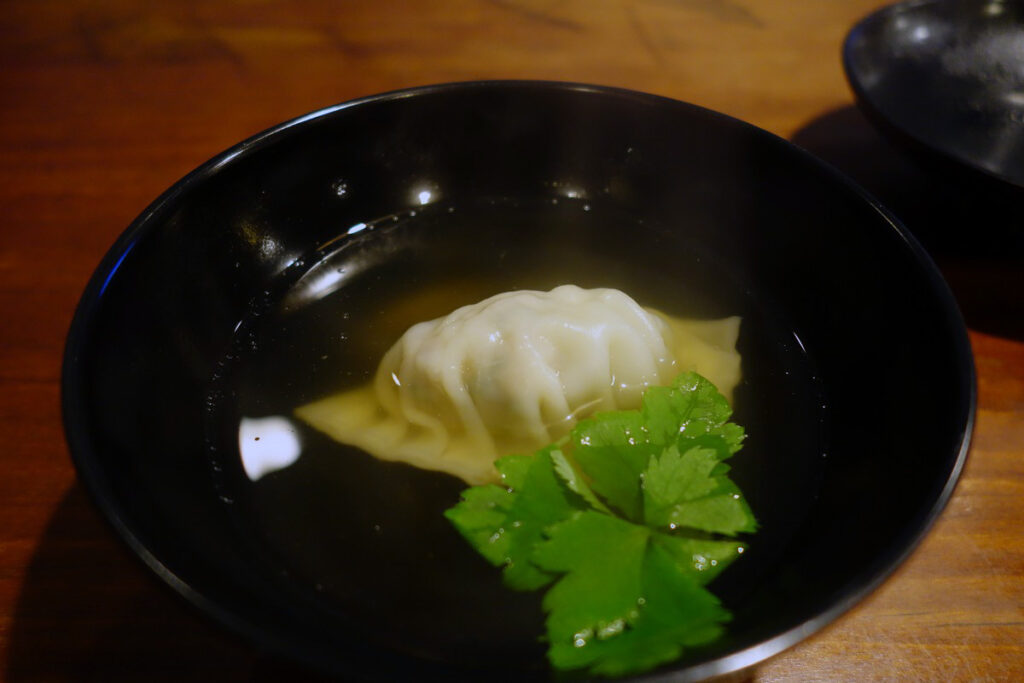
Dumplings made with mountain vegetables and pork, instead of using leek or Napa cabbage.
This is the image of using mountain vegetables. Wow, there is also this way of eating.

Cold-smoked rainbow trout in the back.
The lower left tongue is pickled in miso, and the roast beef is straight.
Wild vegetable tempura
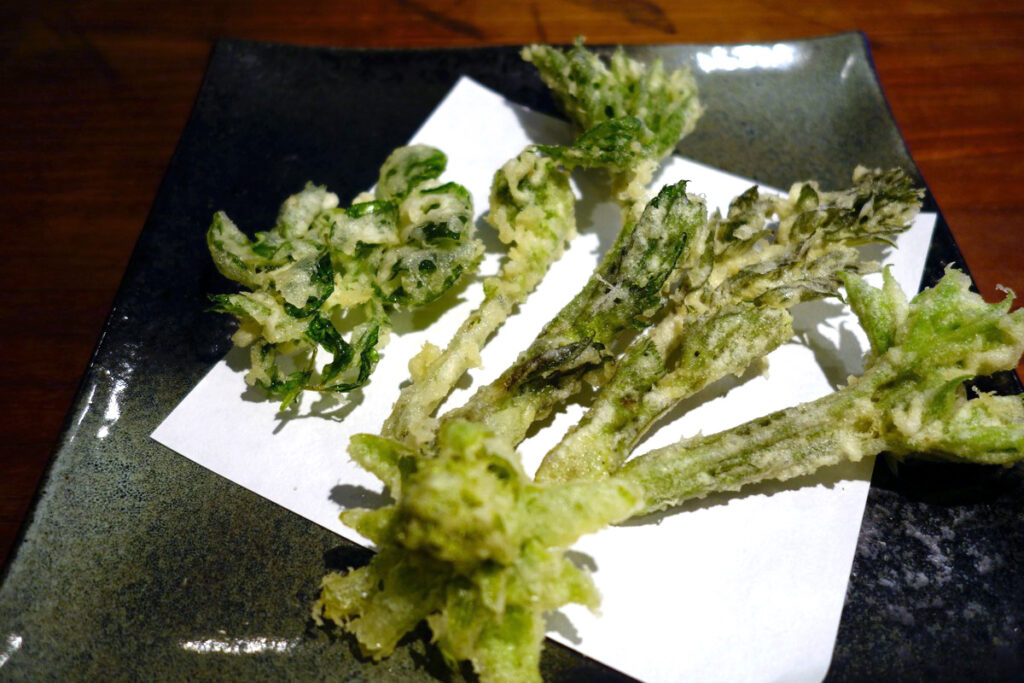
Fukinoto, Koshiabura, cod sprouts, cod waste, adzuki bean greens, etc.
There is no reason why it is not delicious.
Comparing the tastes of flower wasabi
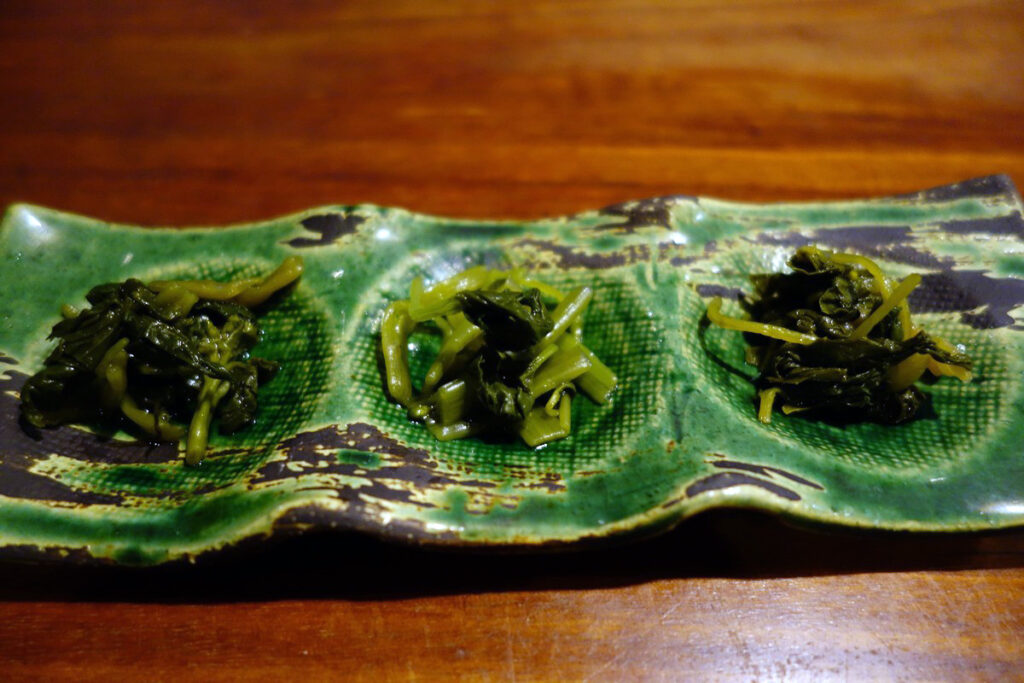
From the right, it is finished with vinegar, salt, and soy sauce.
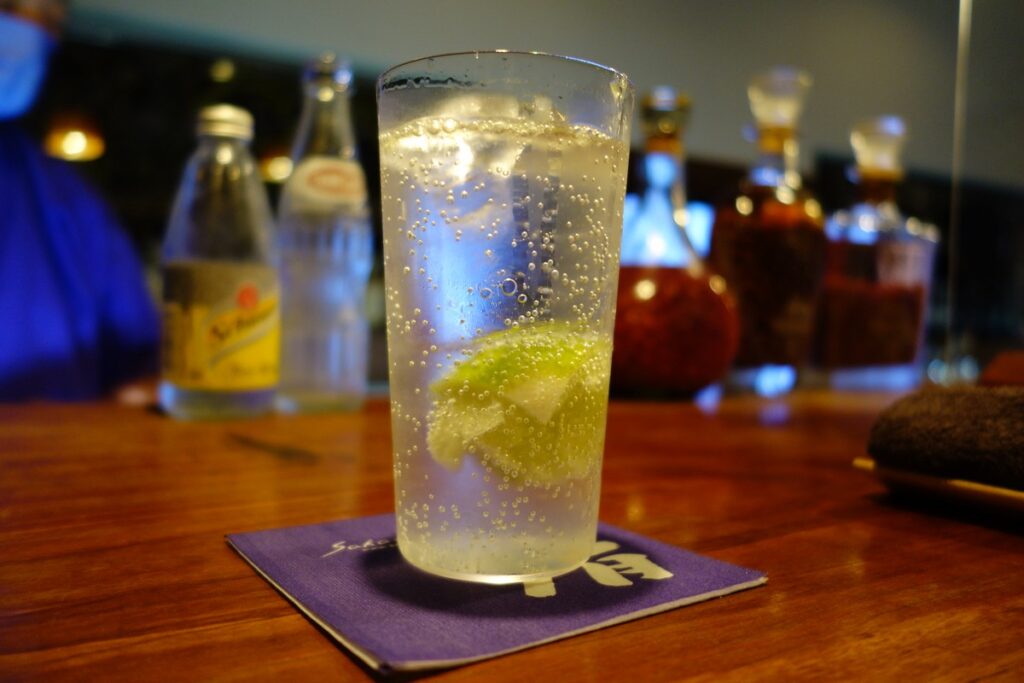
Next non-alcoholic, lime soda.
Salt-grilled Amago

The fish is said to have been caught by the head chef today.
I haven’t had wild caught fish this year and was impressed with its firm flesh.
Wild vegetable salad
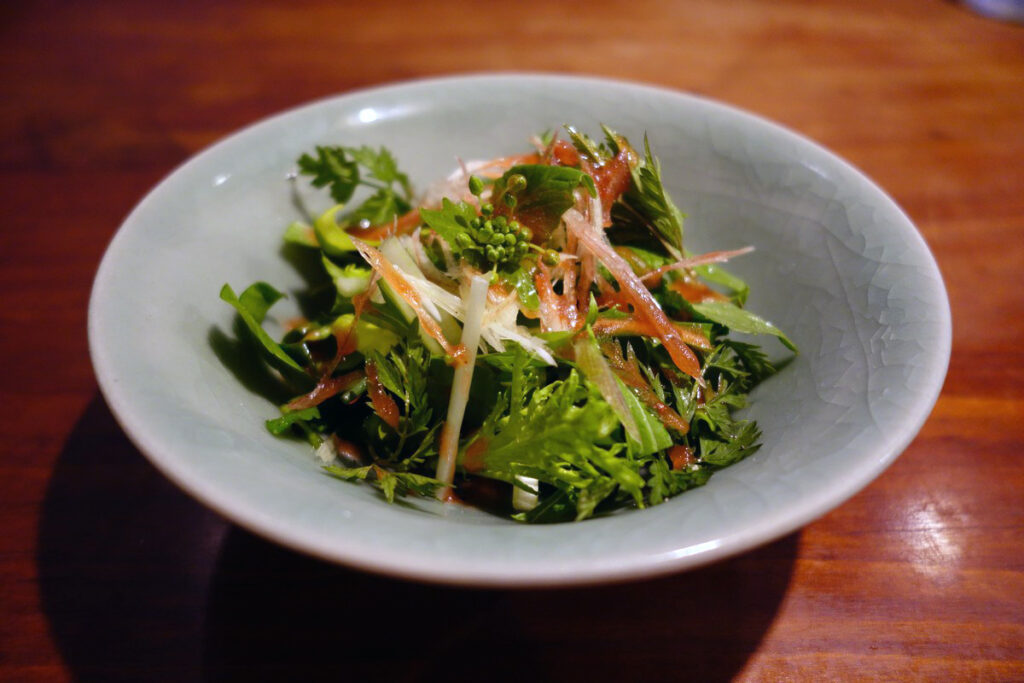
This should also be called Columbus’ egg.
Wild vegetables are an ingredient I often eat, but this is the first time I’ve eaten them in a salad.
Hida beef tasting comparison

The left is a lamp, and the right is sirloin.
It seems that various methods were tried for lighting the fire, and as a result, it was found that grilling with stones was the best.
It seems that it is baked with hot granite.
The seasoning is thinly seasoned so as to enjoy the flavor of the meat rather than the flavor of the sauce, with excellent balance.
Japanese mackerel sauce

Offshore Pickled Mozuku and Firefly Squid
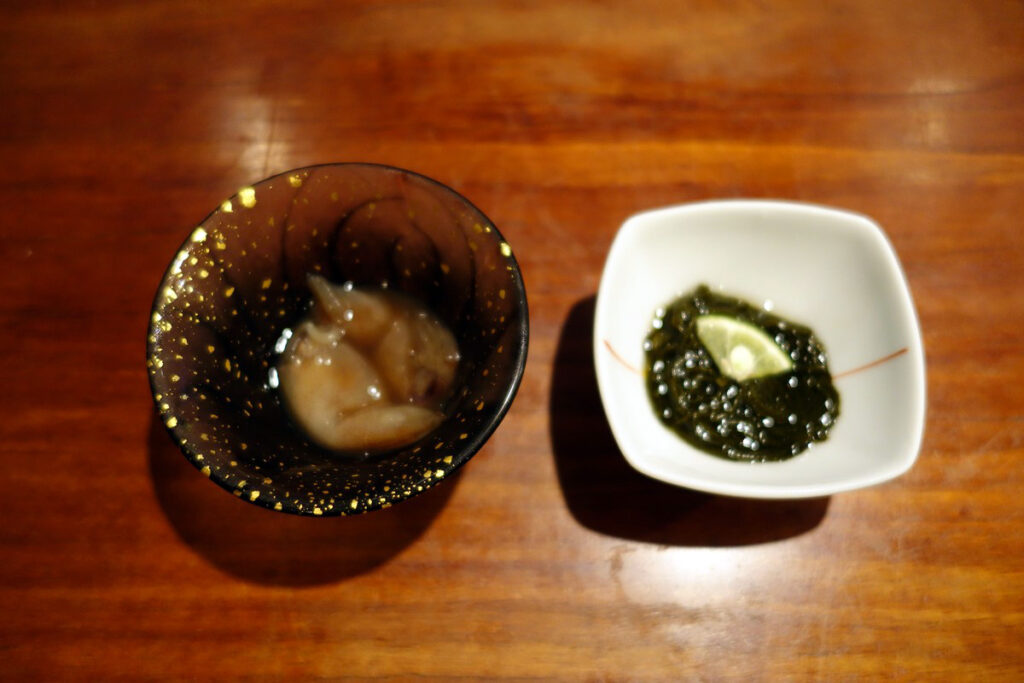
This time of year’s classic, dried firefly squid. Of course, homemade.
And then there’s the Mosquito that can be caught around the border of Toyama and Niigata prefectures.
It was a Mosquito with a thin, crisp, and unique texture that I’ve never tasted before.
Nabe of Mountain
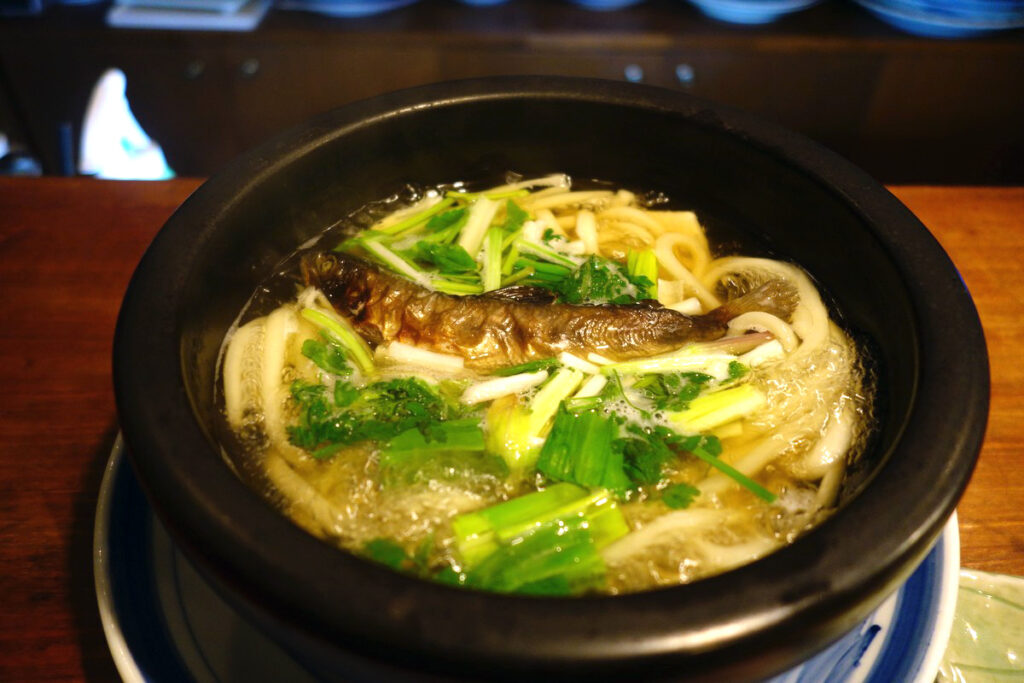
And for the end, a hot pot and udon.
The hot pot is inspired by bone broth and has a good broth made from rockfish.
It also includes various wild mountain vegetables.

The soup is not made just for the sake of having a clear broth, the rockfish is also carefully cooked.
Desert
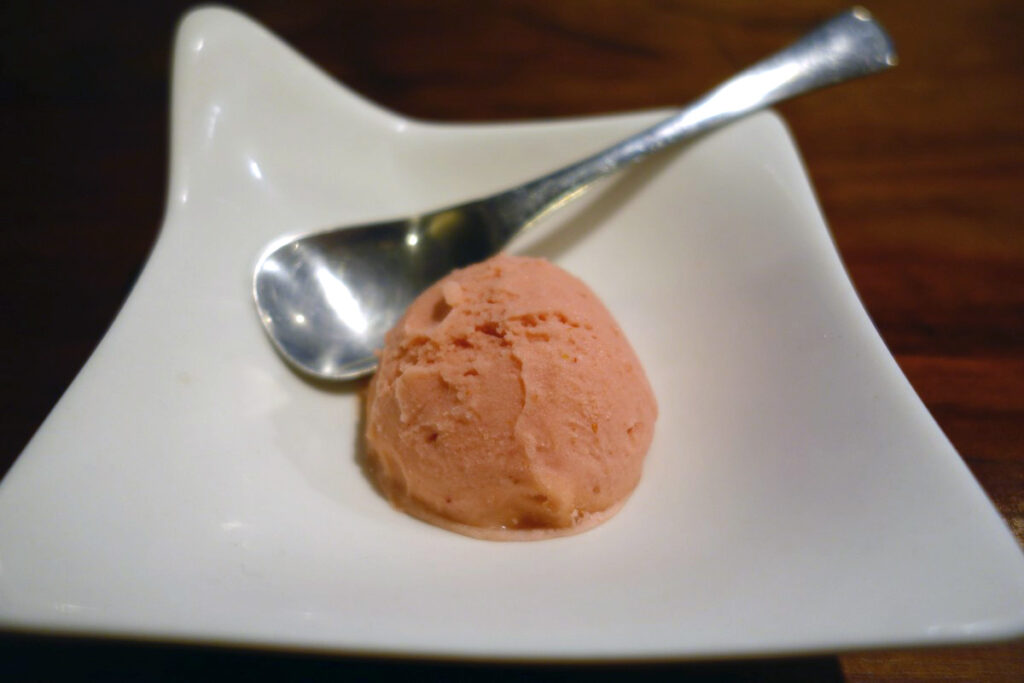
Ice cream made with Nohime and Hida milk.
Summary
It sounds like you had a wonderful dining experience, enjoying the local cuisine and learning about the ingredients used in the dishes.
You also appreciated the visual spectacle of the meal and were impressed by the selection of analog records.

Apparently, there are over 2000 records in the collection.
During my training days in Osaka and Kyoto, he acquired many LPs recommended by friends who were DJs, and it became quite a collection.
But since it would be a waste to just let them sleep, he makes time to listen to them and also run a rock bar-style business on a regular basis.
He reflects on how this creative cuisine was born from this kind of drive.
This is a personal matter, but I started working at a music-related publishing company during my university days.
I was part of the culture magazine, and the company had a rock spirit as a whole premise. For example, my boss used to say that “Creative work can’t be done by anyone who hasn’t had a strong rock experience, whether they’re a photographer or a designer.”
Of course, as I got older, I gained the discernment that it doesn’t have to be rock, but the point is whether there is a counter-culture spirit or not.”
I experienced a night in Takayama where I felt a delightful shock, where I doubted already existing answers, thought about what could be better on my own, and acted to put it into practice.
In the world of Japanese cuisine, I rarely feel such a spirit. Although I have no responsibility in the gourmet industry, I might want to only visit restaurants run by chefs who love rock music.
Menu
【Course】
“OMAKASE” 11.000 JPY / 13.000 JPY / 16.000 JPY
【Hidagyu Course】
“Hidagyu Stone Grill Course” 10,000 JPY
“Hidagyu Sukiyaki Course”11,000 JPY
“Hidagyu Syabusyabu Course”11,000 JPY
“Winter only! Wild Gibier Course” 20,000 JPY
*Please note that the menu and prices are only for reference. They may change depending on the season and availability of ingredients.
How to Reserve
Reservations must be made 3 days in advance. Accepted for 2 people during lunchtime and 1 person at night.
Reservations can be made by phone or through web instant booking on ‘Gurunavi’.
▽Reserve Hotel; Associa in front of this restaurant▽
Map/Access
About 8 minutes by car from JR Takayama Main Line “Takayama Station”
About 10 minutes by car from the Chubu Jukan Expressway “Takayama IC”
“Hida Season Cuisine SAKANA (肴)” Shop Info.
Business Hours: Lunch 12:00-15:00(L.O.13:00), Dinner 17:30-22:00(L.O.20:00)
Holiday: Irregular
Telephone: 0577-36-1288
Address: 1126−1. Echigo-cho, takayama-shi 506-0033
Official Web
Related article▽
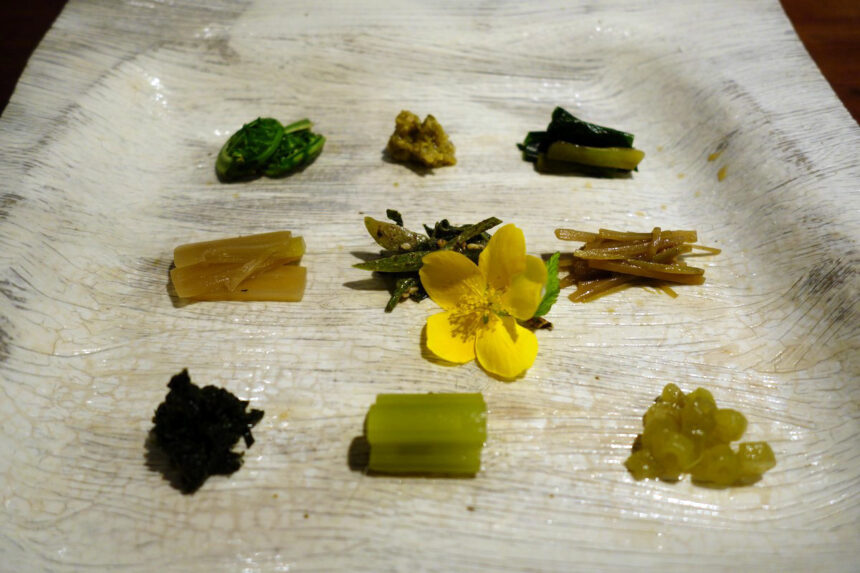
![[Hida Takayama] All 19 recommended restaurants including Michelin listed [Foodies Town Guide]](https://foodies-asia.com/en/wp-content/uploads/2020/10/4060509_m-1-150x150.jpg)
![[Takayama] Top 6 European Cuisine Restaurants, including French and Italian -my best series-](https://foodies-asia.com/en/wp-content/uploads/2022/04/DSC08553-150x150.jpg)
![[Hida Beef] Steak? BBQ? 10 Recommended Restaurants in Takayama, Including Michelin Listed](https://foodies-asia.com/en/wp-content/uploads/2022/07/DSC01447-150x150.jpg)
![[Hida-Takayama-Gero] 5 recommended ”Gattsuri-Meshi(large set meal)” dining along National Route 41 [my best series]](https://foodies-asia.com/en/wp-content/uploads/2022/08/DSC01321-150x150.jpg)
